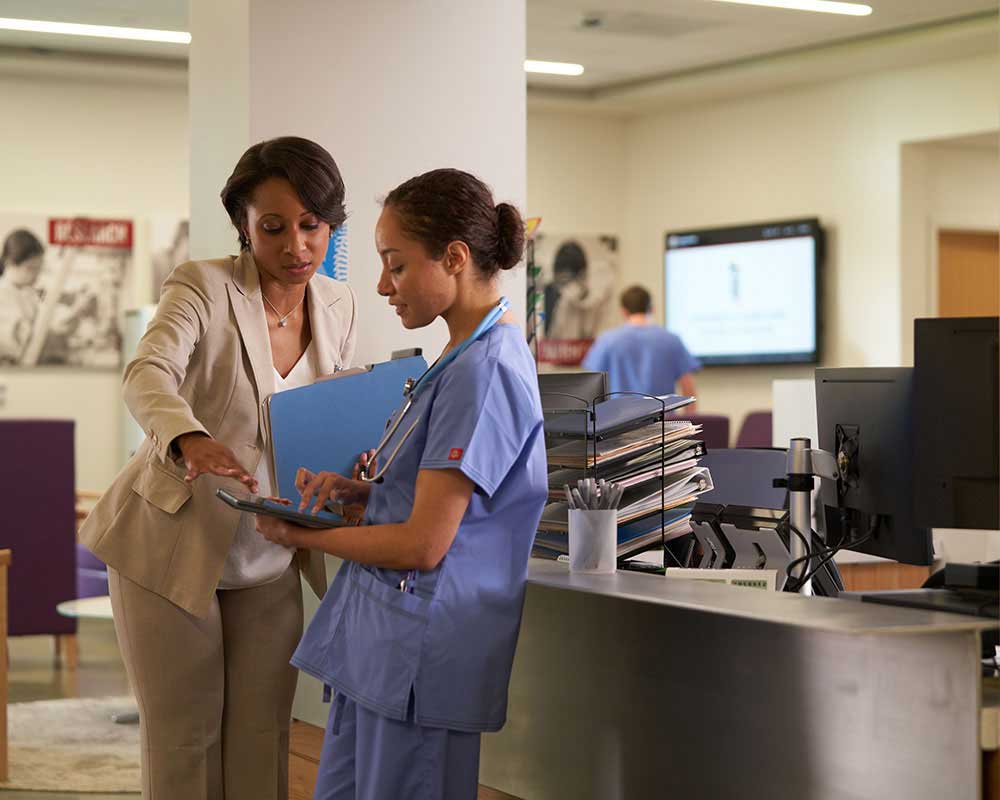Finest Practices in Medical Management for Improving Effectiveness and Lowering Expenses
In the ever-evolving landscape of health care, the search of finest techniques in clinical management is extremely important for enhancing performance and suppressing costs. By incorporating advanced modern technologies such as digital health and wellness records and telemedicine, health care carriers can streamline operations and improve client treatment.
Leveraging Advanced Modern Technology
In today's quickly evolving medical care landscape, leveraging advanced innovation is no more optional however crucial for efficient medical management. The integration of electronic services right into healthcare systems has actually transformed the means facilities run, enhancing processes and enhancing client care. Electronic Wellness Records (EHRs) are pivotal, offering comprehensive person data that can be accessed quickly by accredited workers, hence minimizing redundancy and decreasing mistakes. By streamlining patient info, EHRs get rid of the requirement for troublesome paperwork and help with seamless interaction amongst medical care suppliers.
Telemedicine is one more technical development that has transformed patient communication. It provides comfort for both clients and healthcare specialists by allowing remote consultations, which can lower the requirement for in-person brows through and optimize consultation organizing. Additionally, telehealth platforms can expand medical care access to rural or underserved locations, linking voids in care distribution.
Moreover, the usage of Artificial Knowledge (AI) and artificial intelligence is coming to be progressively prevalent in predictive analytics, enabling very early discovery of possible wellness problems and more informed decision-making. These innovations, when integrated successfully, can enhance analysis accuracy and personalize individual therapy plans, eventually resulting in boosted medical care results and functional effectiveness.
Optimizing Source Allowance
Effective source allowance is vital for optimizing the efficiency of medical administration. By tactically handling sources such as workers, equipment, and funds, medical care centers can substantially boost their operational performance, improve individual outcomes, and decrease unnecessary expenses. The initial action in optimizing resource appropriation includes carrying out a comprehensive evaluation of existing assets and determining areas where sources might be underutilized or overextended. This assessment must be data-driven, making use of metrics and analytics to inform decision-making processes.
Prioritizing source appropriation based upon client requirements and solution needs is essential. This involves straightening resources with high-demand areas, such as emergency situation care or specialized treatments, to guarantee prompt and effective person care. Implementing versatile staffing versions can likewise maximize labor sources by readjusting employees allotment in reaction to varying client quantities. Additionally, accepting telemedicine and other technological solutions can minimize physical source restraints by supplying alternate avenues for patient-provider interactions.
Funds should be carefully kept track of and assigned with critical insight to support both temporary operational demands and long-lasting institutional goals. This consists of investing in training programs that improve staff competencies and embracing energy-efficient methods that lower operational expenses (medical administration). Ultimately, an enhanced source appropriation technique cultivates a sustainable medical care atmosphere that is receptive, reliable, and monetarily sensible
Streamlining Process Procedures
When medical care facilities objective to boost functional efficiency, streamlining process processes becomes an essential emphasis. Reliable workflows minimize redundancy, eliminate unnecessary steps, and boost coordination among healthcare experts. This method not only accelerates service distribution however likewise boosts the high quality of individual treatment.

Next, innovation integration plays a significant role in enhancing operations. Applying digital health records (EHRs) and electronic physician order entry (CPOE) systems minimizes paperwork, minimizes human mistake, and ensures details comes to all appropriate employees. In addition, leveraging telemedicine systems can enhance client examinations and follow-ups, lowering the pressure on physical infrastructure.

Eventually, structured operations bring about set you back decreases and enhanced patient satisfaction, cultivating a much more lasting healthcare environment.
Enhancing Information Management
Structure upon streamlined operations, optimizing information administration ends up being a crucial part beforehand medical care management. Efficient data administration systems are crucial for keeping precise patient documents, improving decision-making, and making certain compliance with governing standards. By applying durable information monitoring options, healthcare centers can boost the top quality view publisher site of individual care while at the same time minimizing operational prices.
One trick aspect of enhancing information monitoring is the combination of advanced electronic health document (EHR) systems. These systems assist in the seamless exchange of individual info across various departments, reducing replication of tests and decreasing mistakes. A well-designed EHR system sustains data analytics, allowing healthcare companies to determine trends and make informed decisions relating to individual care.
In addition, guarding client information is critical. Adopting comprehensive cybersecurity actions, consisting of security and routine audits, ensures the stability and privacy of sensitive info. This not only secures clients yet additionally keeps the organization's track record.
Investing in team training is another vital element. Educating healthcare experts on information management methods boosts their capacity to successfully make use of innovation, causing boosted person results. To conclude, enhancing data monitoring via advanced modern technology and comprehensive training is crucial for accomplishing effectiveness and expense decrease in medical administration.
Fostering Collaborative Communication
An essential part in advancing medical administration is fostering collaborative communication among health care professionals. Efficient communication is critical for making certain seamless person treatment, enhancing therapy outcomes, and reducing errors. By motivating open discussion and sychronisation across multidisciplinary teams, healthcare companies can improve their functional performance and lower unneeded costs.
Central to this technique is the integration of communication modern technologies such as electronic health and wellness records (EHRs) and safe and secure messaging systems, which help with the rapid exchange of vital individual info. These devices make it possible like it for health care companies to access and share information in genuine time, ensuring that all team participants are notified and lined up in their decision-making procedures. In addition, regular team conferences and interdisciplinary rounds can additionally advertise a society of cooperation and accountability.
Educating programs concentrated on improving interaction skills are additionally crucial. These programs can help staff create the ability to convey details plainly and listen actively, hence decreasing misconceptions and fostering a supportive job setting. Additionally, adopting standardized interaction protocols, such as SBAR (Circumstance, History, Analysis, Suggestion), can enhance the exchange of info, making sure that vital information are conveyed succinctly and effectively. Eventually, promoting joint communication causes improved healthcare distribution and price financial savings (medical administration).

Verdict
Incorporating advanced technology, such as electronic health and wellness records and telemedicine, together with maximized resource allocation and streamlined process processes, is essential for enhancing effectiveness in clinical management. Efficient data administration and promoting joint communication among health care groups are critical for reducing redundancies and improving care quality. By focusing on next page preventive care and taking part in high quality improvement efforts, healthcare companies can accomplish significant cost savings and improved client end results, consequently ensuring lasting healthcare distribution in an increasingly complex atmosphere.